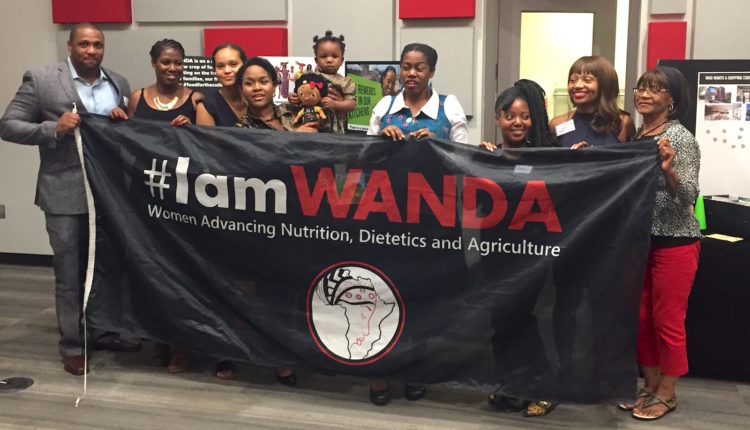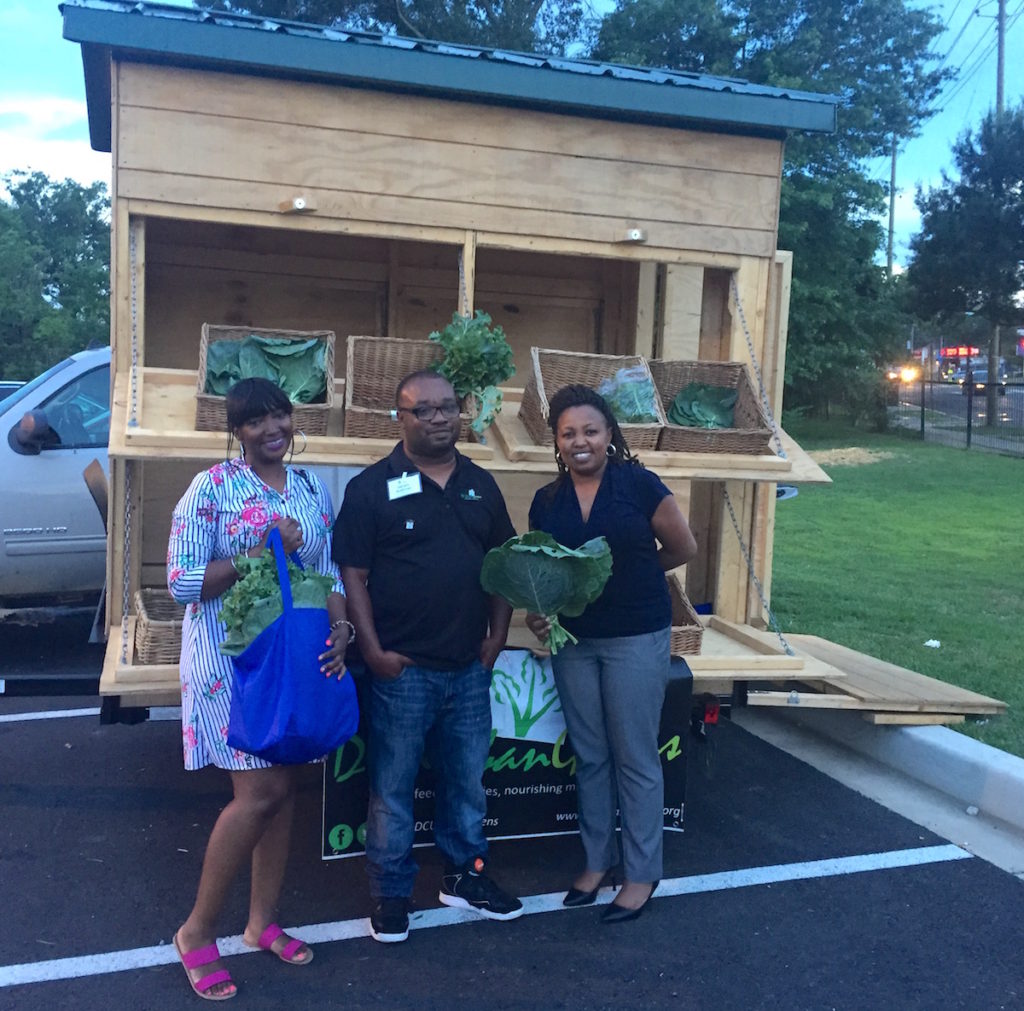
Meet the innovators fighting for health and nutrition east of the river — with an assist from Sibley Memorial Hospital
The health concerns pervasive in wards 7 and 8 vary greatly — from food deserts to access to specialty medical services and urgent care. But a collaboration between Sibley Memorial Hospital and the DC government is providing guidance and funding to help a group of “innovators in residence” tackle the full range of health issues east of the Anacostia River.
Known as the Ward Infinity Initiative, the program welcomed the four members of its 2019 cohort in January. The new participants constitute the second cadre of Community Health Innovators in Residence appointed since the program’s 2017 launch.
“I think all the health care organizations have a responsibility to really step up to the plate in the District of Columbia and meet the needs of the community,” surgeon Hasan Zia, Sibley’s interim president and CEO, said in an interview with The DC Line. “We wanted to look at solutions that really met the need of creating access and taking down the barriers to actually being successful with addressing the social determinants.”
Sibley, located at 5255 Loughboro Road NW on the opposite end of the city, is expanding its all-around presence east of the river thanks to Ward Infinity as well as a new cancer center, which is a joint venture with Unity Health Care. The center will focus on prostate cancer and cancers common in women.
“Community engagement is foundational to Sibley’s mission,” said Gary Stephenson, senior director of media relations and public affairs for Sibley, which is part of Baltimore-based Johns Hopkins Medicine. “Sibley recognizes the disparities in health outcomes in neighborhoods east of the river and is committed to partnering with community to help find innovative solutions to these issues.”
According to Marissa McKeever, Sibley’s director of government and community affairs, the initiative has a “human-centric” approach that keeps the focus on the eventual beneficiaries of its programs. Sibley and the innovators conduct listening tours throughout the community, gathering data on the sorts of support people need to get and stay healthy.
The listening tours have revealed a range of problems, so it is fitting that the groups selected to become part of the cohort have a broad variety of specialities — from nutrition and health literacy to housing. Though the groups all focus on issues related to health, each has a distinct approach.
DC UrbanGreens, one of the innovator groups in the new cohort, travels around Southeast DC with its “mobile market,” targeting areas with reduced food access to ease the strain on a handful of grocery stores east of the river serving tens of thousands of people.
“[Ward Infinity is] basically helping us to achieve a goal that we already had, which was to truly get community feedback about what we’re doing,” Annie Li of UrbanGreens said in an interview. “[It] presented us with this awesome opportunity to do that and to get paid for that.”
UrbanGreens isn’t the only group in this year’s cohort tackling nutrition. While UrbanGreens works on access, WANDA (Women Advancing Nutrition, Dietetics and Agriculture) uses communitywide storytelling to stress the importance of healthier dietary habits.
Instrumental to its effort is the “Where’s Wanda?” series written by Tambra Ray Stevenson, WANDA’s founder. The first book in the series follows a girl named Wanda on her odyssey to Africa, where she learns from farmers about nutritious, traditional foods. According to Ward Infinity, WANDA will use “cognitive theory-based behavior change procedures” to help advance health literacy among District residents.
Speaking at a recent town hall forum organized by Sibley, Stevenson said she wanted to “reclaim our food history” and emphasized the community’s African roots. Stevenson is a member of the DC Food Policy Council and a nutritionist by trade.
Other innovators are working on issues that one might not usually associate with health.
Amanda Stephenson is a self-described “art-trepeneur” and “creative leadership nomad” working to use underdeveloped lots in wards 7 and 8 as sites for recycled shipping containers able to provide housing. She believes this will help people to avoid being priced out of the District.
“Looking at things holistically, you have to help and heal a person,” she said. “And to do that you cannot just think food. You’ve gotta think home, because adequate health starts at home. … A lot of times in recent years we’ve seen a great migration of people because of the hike in prices.”
The fourth team of innovators is developing an app that facilitates communication between health care providers and their patients. Ward 8 resident Kesha Lee — the founder of #ward8reads, an organization that elevates literacy and book access in Southeast DC — said she and her partner Carlisha Gentles want to raise $200,000 and solicit tech experts to help them create an app that applies what they’ve learned speaking to community members. The app will translate dense medical terminology into plain English.
According to a flier distributed by Lee and Gentles, more than a third of Ward 8 adults are “functionally illiterate” — a major obstacle to health literacy. Given that medical visits often include minimal face time with actual doctors, this contributes to a situation in which many Ward 8 residents are not adequately informed about their own health.
LIke the other applicants, Lee submitted a written application and a short “pitch” video in order for her project to be included in the Ward Infinity initiative.
After their projects were accepted, Lee, Gentles and the other members of the 2019 cohort began meeting periodically with coaches and advisers from Sibley and the District to optimize their plans.
“We’re working in parallel,” Lee said of the members of the cohort. “Our coaches are doctors, health historians, design-thinking experts, food and nutrition experts.”
According to a report released last October by Sibley on the previous cohort, innovators are “guided through an intensive design-thinking curriculum, which was developed to provide the teams with a set of useful tools and resources to … bring their innovative ideas to fruition.”
This year’s innovators received $30,000 in funding for their projects. Prior recipients got $25,000 each, and the size of the grants for next year’s cohort is still being determined.
Along with the grants comes the guidance provided by Sibley and city officials. ”We really coach them through taking an idea from the idea stage … starting off with listening, prototyping and multiple phases of refinement,” Zia said. “And all the while they’re connected with really great leaders.”



Comments are closed.